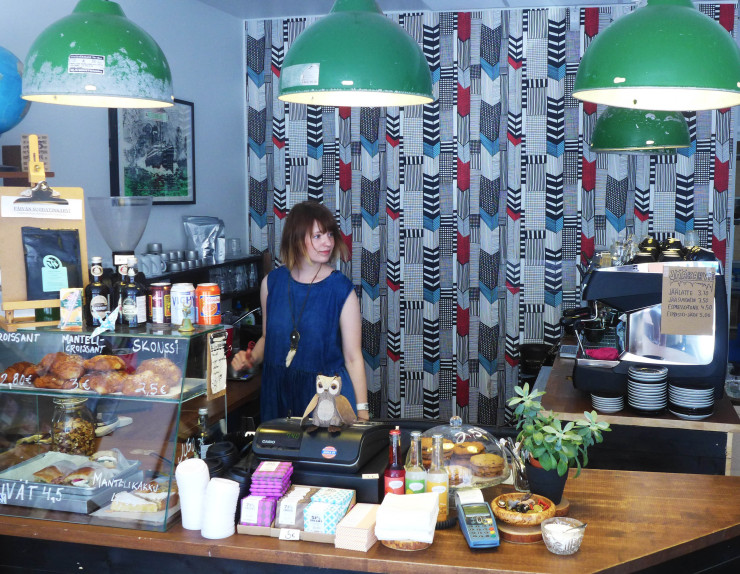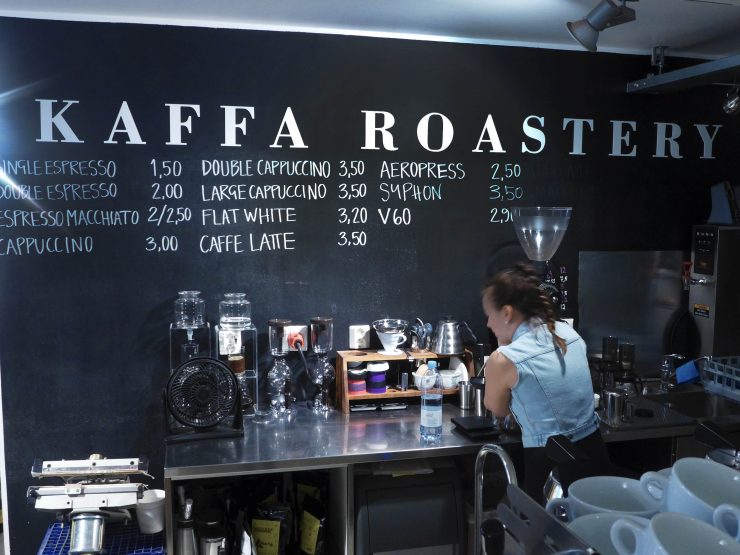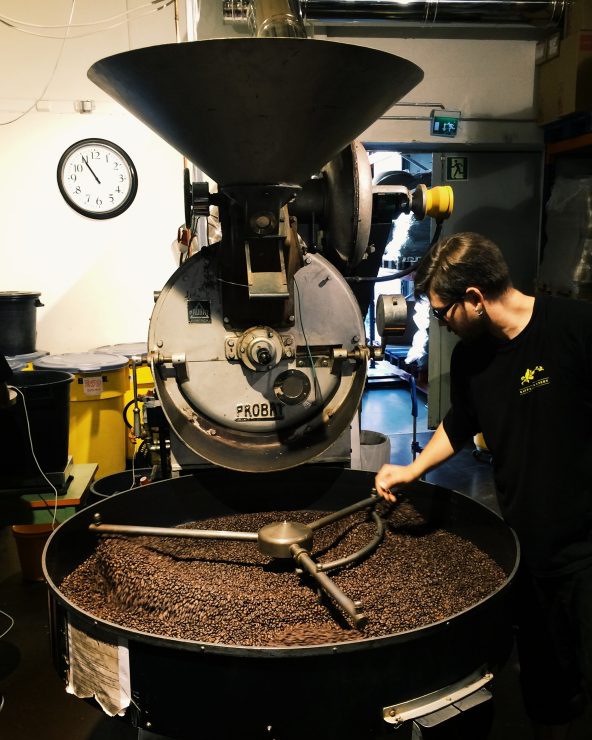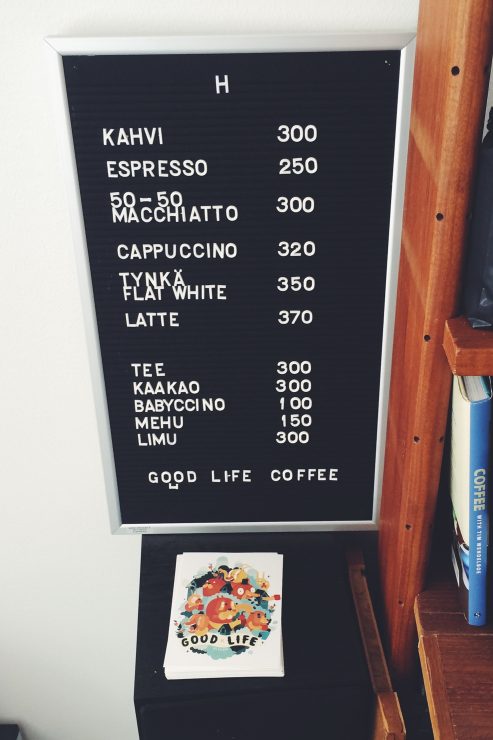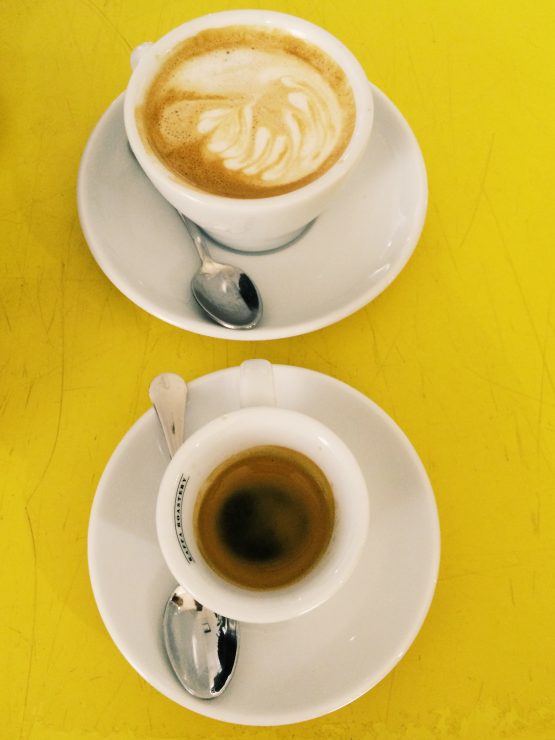Helsinki may not be quite as coffee trendy as the other European capitals, but it sure does seem to have worked its way to the top of a lot of traveller’s I Want To Go To There lists. In March we published a guide to the emerging Helsinki coffee scene, and now we’re taking a deeper look at how the scene is growing through the eyes of two Helsinki coffee professionals.
The most quoted fact about Finland for coffee buffs is that it’s the world’s second biggest consumer of coffee per capita (trumped only by the Netherlands). This is somewhat confusing, because despite being a caffeine-crazy bunch and holder of the top Nordic consumer spot, there’s not nearly as much hype about the Finnish specialty kahvi scene as there is about the coffee in nearby Sweden, Denmark and Norway. Copenhagen, Oslo, and Stockholm have had their top cafes featured in a wide variety of international publications, including the New York Times. In contrast, humble Helsinki’s coffee scene has developed largely in isolation.
With this is mind, on a recent visit I had a chat with Mike Akins, from one of the roasters at the forefront of Finnish coffee, Kaffa Roastery; and with Lauri Pipinen, former national barista champion and owner of trailblazing café Good Life Coffee, to get their thoughts on the capital’s transformation from home of stale filter to coffee kingdom-in-the-making.
“Specialty coffee is really new in Helsinki, but it’s growing rapidly,” Pipinen told me, and a similar sentiment was echoed by Mr. Akins. But how’s that change taking place?
According to Pipinen, coffee has always been a hugely popular drink, with most Finns knocking back three cups a day. But what they typically gulp down is nothing to write home about; instead, slapdash filter is their go-to, and the ubiquitous Juhla Mokka–a cheap blend accounting for half of all cups of coffee consumed–has long been a national metonym for all coffee.
Akins and Pipinen both point to the establishment of Kaffa’s roastery in Helsinki’s trendy Punovuori district four years ago as a major moment that helped kickstart the city’s changing attitude towards coffee. Kaffa, along with Helsingin Kahvipaahtimo and Turun Kahvipaahtimo, two other small quality-focused roasteries that together have helped expose Finns to a world beyond dreary homemade brews. As Akins says, it’s one thing to stick to something when it’s all you know, but once people’s eyes–and mouths–were opened to an entirely different caffeinated proposition, one which not only gave them an energy kick but actually tasted good, they embraced it.
The roasteries have remained true to the Nordic tradition of lightly roasting beans. The story goes, as Pipinen tells me, that this is a carry-over from wartime, when Nordic countries sought out the most efficient way to make coffee: light roast simply gives a greater mass output of beans. For inspiration in developing their modern style, Kaffa has kept things pretty local by looking to Norwegian jewel Tim Wendelboe and Swedish institution Koppi for inspiration.
What happened next is the same story we see echoed in so many coffee scenes. These roasting companies helped bring a refreshing focus on coffee quality to Helsinki, and in doing so, they facilitated the rise of quality cafés throughout the city that’s flourishing today.
According to Akins, Kaffa in particular “became like a training ground for talented young baristas who have since gone on to set up their own specialty cafés.” This includes Pipinen and his Good Life Coffee, as well as 2013 Finnish national barista champion Kalle Freese and Freese Coffee Co., profiled elsewhere on Sprudge.
Pipinen opened Good Life in 2011 in vibrant Kallio, which was formerly a cheap student area, but is becoming increasingly gentrified. The cafe sought to combine a relaxed space with expertly prepared brews, and has found a popular reception–Good Life expanded into in-house roasting last month.
The upshot of this insurgence of cool cafés, Akins says, is that, slowly but surely, a coffee culture has developed. Yes, there has always been a tradition of drinking litres of the stuff, but now there’s a growing appreciation for coffee as an artisan product. What’s more, Pipinen remarks, young Finns are warming to the idea of coffee as a social outing. Bit by bit, people are actually sitting down at cafés to sip their cappuccinos and have a natter rather than seeing them as take-away joints.
But that’s not to say Helsinki is in step with Stockholm or Copenhagen just yet.
For one, Pipinen notes, there is still a widely held opinion, particularly among older generations, that “coffee is something you get for free at work or at a friend’s house.” And when coffees are bought, customers tend to steer clear of filter drinks–most of the time opting for lattes–“because they associate filter with the cheap stuff they can get at home.” Pipinen and Akins are hoping to change this, with a strong focus on filter at both shops.
Aside from embracing filter, I asked these two trailblazers where they saw Helsinki’s café scene in five years’ time. Both looked to the fusion of specialty coffee with equally good food as the next big step. As Pipinen says, “people are taking more interest in what they put into their mouths,” and a collision seems bound to occur in the near future.
Helsinki may not yet be as much of a household name as other Nordic coffee destinations, but with the likes of Kaffa and Good Life, not to mention places like Freese Coffee Company and Kahvila Sävy profiled in our Helsinki cafe guide, there is no doubt this is a coffee scene on the rise. Sometimes great things happen well out of the spotlight.
Jamie Waters (@Jamie_s_waters) runs the London-based coffee, food and fashion blog flat black. This is his first piece for Sprudge.com.


